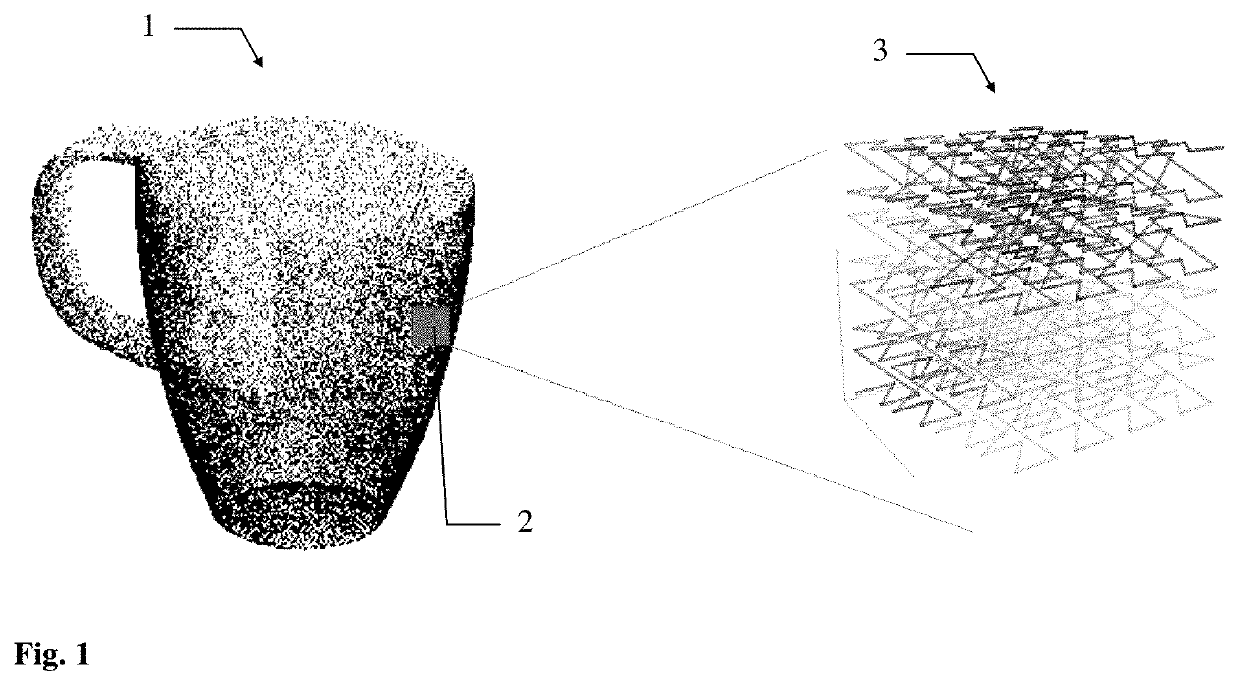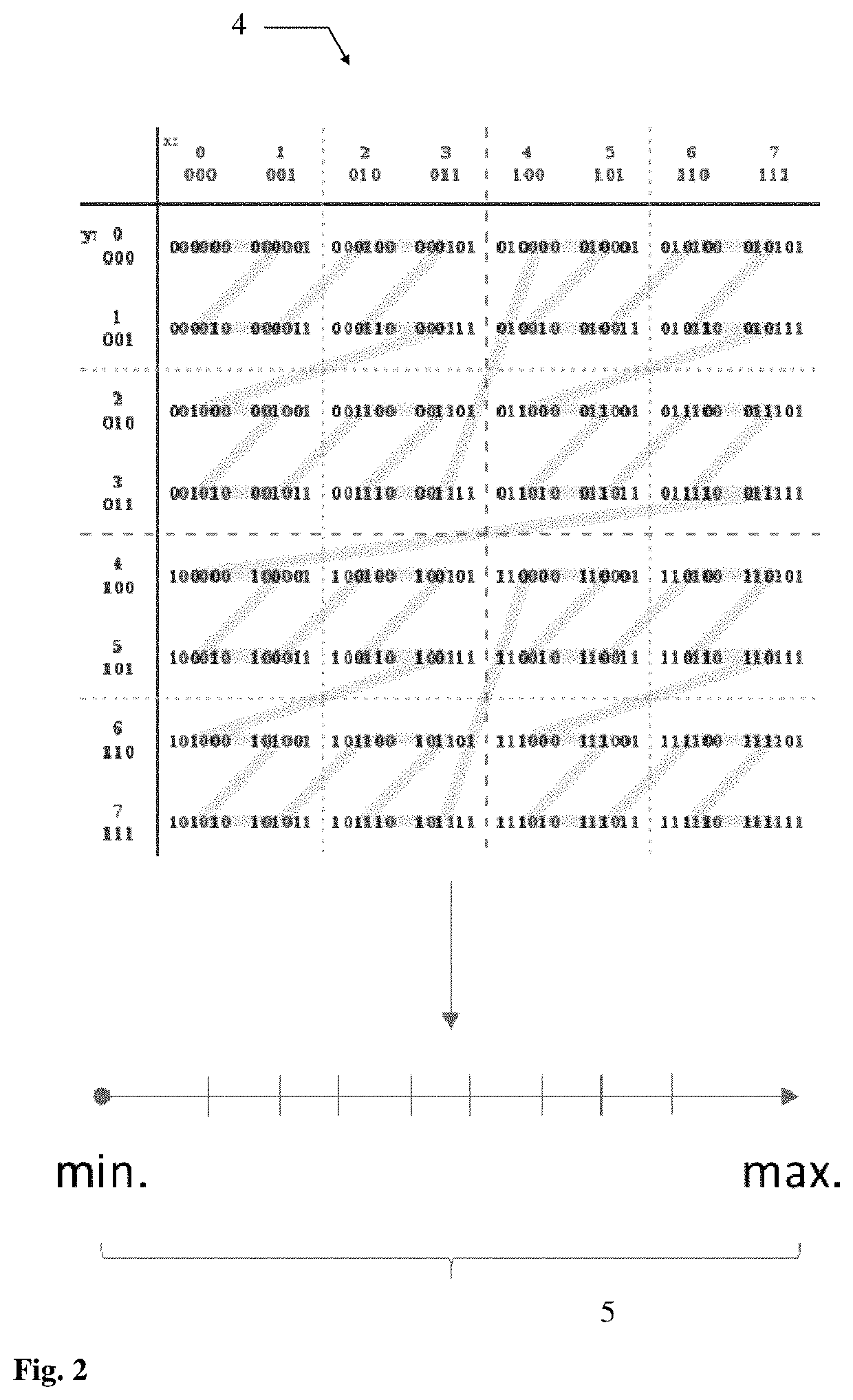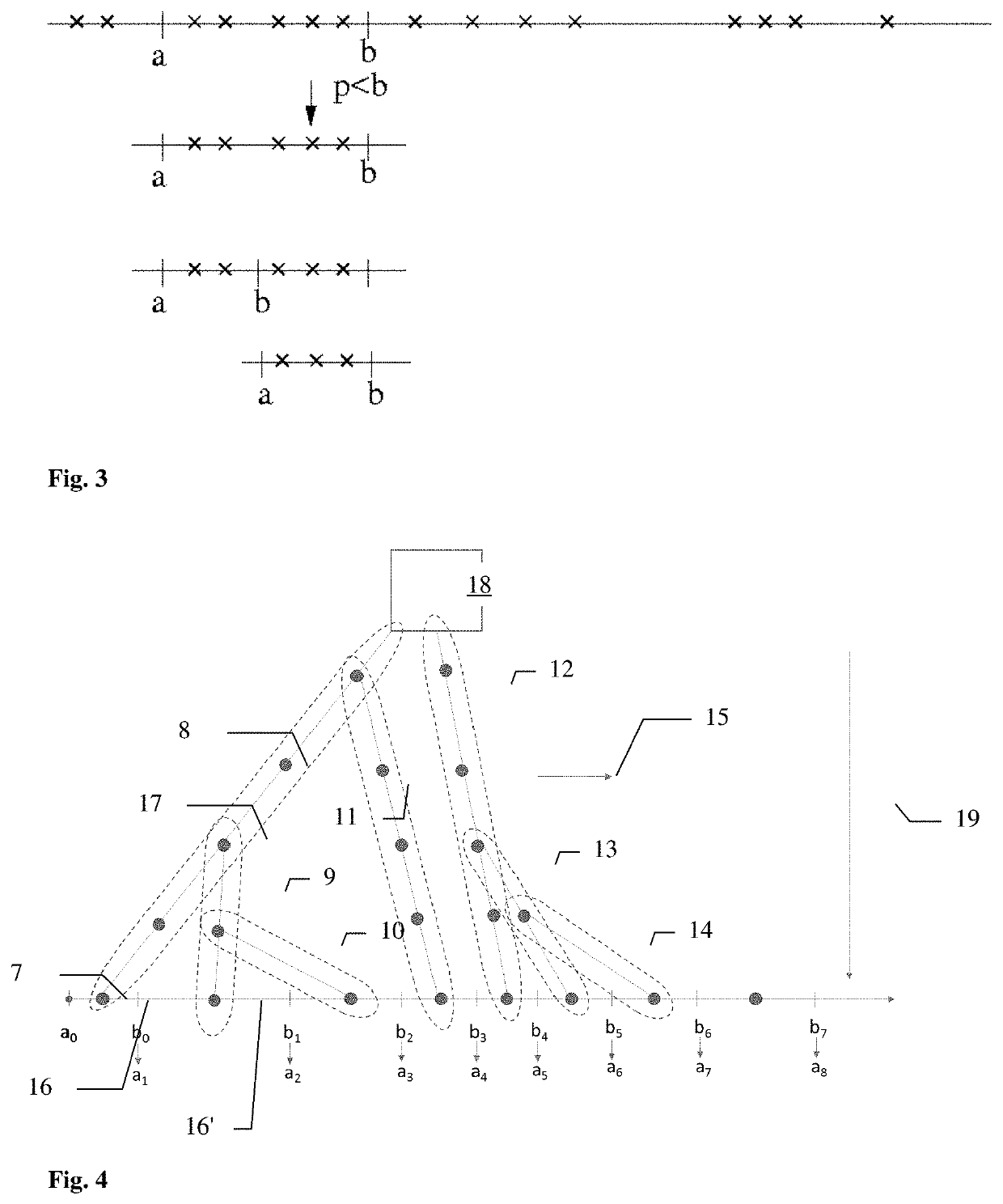Indexation of massive point cloud data for efficient visualization
a point cloud data and efficient technology, applied in the field of preprocessing point clouds, can solve the problems of difficult storage and especially the handling of immense amounts of data, and achieve the effect of efficient post-processing data handling
- Summary
- Abstract
- Description
- Claims
- Application Information
AI Technical Summary
Benefits of technology
Problems solved by technology
Method used
Image
Examples
Embodiment Construction
[0070]FIG. 1 shows a point cloud representation of a 3D object as it could result from scanning with a LIDAR system. The point cloud 1 is composed of a plurality of points. The points are stored with their corresponding x, y and z coordinates and depending on the LIDAR system used also with associated intensity and colour e.g. RGB values. As schematically illustrated the point density varies throughout the object. The square area in the point cloud illustrates a processing bucket 2. The point data contained within the processing bucket do not show any data dependency to surrounding point data. Therefore, the point data within the processing bucket can be processed by the method according to the invention in parallel to point data contained within a plurality of other processing buckets (not shown in FIG. 1). According to the invention the point coordinates of the corresponding points are then converted to Morton indices by bitwise interleaving of the binary coordinate values. Here a...
PUM
 Login to View More
Login to View More Abstract
Description
Claims
Application Information
 Login to View More
Login to View More - R&D
- Intellectual Property
- Life Sciences
- Materials
- Tech Scout
- Unparalleled Data Quality
- Higher Quality Content
- 60% Fewer Hallucinations
Browse by: Latest US Patents, China's latest patents, Technical Efficacy Thesaurus, Application Domain, Technology Topic, Popular Technical Reports.
© 2025 PatSnap. All rights reserved.Legal|Privacy policy|Modern Slavery Act Transparency Statement|Sitemap|About US| Contact US: help@patsnap.com



